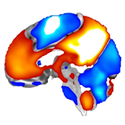An integrated wearable microneedle array for the continuous monitoring of multiple biomarkers in interstitial fluid. Nature Biomedical Engineering.
Tehrani et al, describes the development and implementation of a wearable sensor that contains an array of microneedles for real-time monitoring of lactate and glucose or alcohol and glucose from interstitial fluid. This paper highlights the potential for garnering clinical data from individuals with alcohol abuse disorder, liver disease, and metabolic diseases. [Read More]










